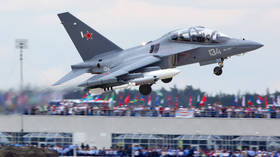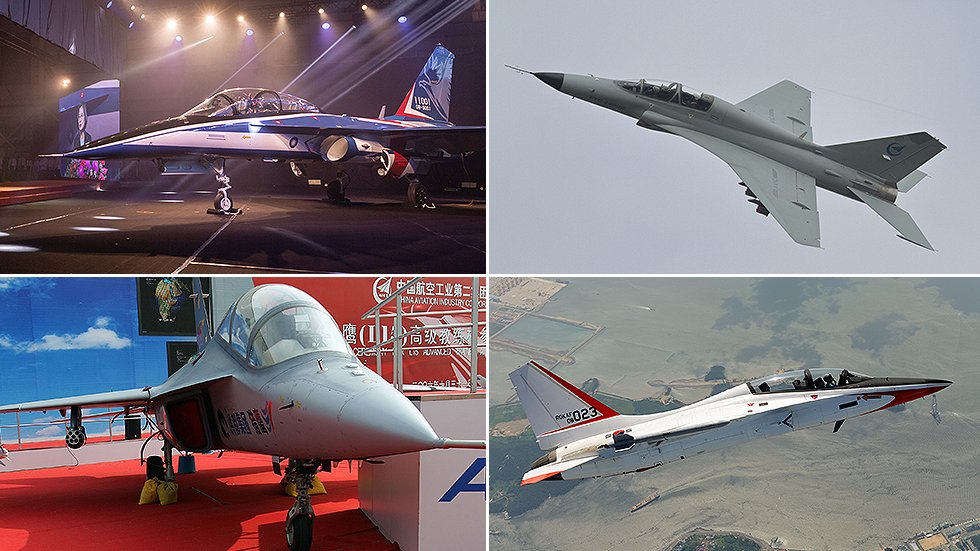Supersonic jets v Russian subsonic Yak-130: US military magazine ranking is not a fair exercise

A review of five of the world’s most capable training jets, published by the Military Watch website, has placed Russia’s Yak-130 (Mitten), last on that list. But is the judgement well-informed?
The website claims that the Russian jet performance “leaves something to be desired” compared to East Asian jets. However, the devil, as always, is in the details.
On top of the recently published ranking sits Taiwan’s Brave Eagle, boasting what Military Watch calls highly advanced combat capabilities. As the website puts it, most fighters in service in the world today pale in comparison with this trainer. Basically, it is a fighter built under the guise of a trainer. The aircraft can deploy the Ching Kuo’s Sky Sword II hypersonic air-to-air missiles, and it integrates an advanced AESA radar.
The Chinese JL-10 is ranked second. Military Watch writes that it has increasingly blurred the lines between a fighter and a trainer with the induction of the new L-15 version. The jet flies at Mach 1.4, accommodates an AESA radar that can detect targets over 100km away, and munitions, such as the PL-5E for short-range air engagements, as well as the LT-2 laser guided bombers.
Another Chinese jet, the JL-9, is listed third. According to Military Watch, this is a jet with a formidable flight performance, Mach 1.5 speed and 16km flight ceiling. The aircraft can carry both PL-8 and PL-9 air-to-air missiles. The JL-9 uses a single more powerful WP-13F afterburning turbojet, which the PLA prizes for its reliability and low maintenance requirements.
Number four is the South Korean T-50, a combat proven platform which has engaged terrorists in the Philippines and Iraq. It deploys a wide range of munitions for air-to-ground strikes, with a secondary defensive air-to-air capability using American AIM-9 Sidewinder missiles. The aircraft was initially intended to be developed into a fighter, that’s why its avionics suite is more advanced and the trainer is capable of deploying AGM-65 Maverick close support air-to-ground missiles and Hydra 70 rockets.

Finally, closing the Military Watch Top 5 list is Russia’s Yak-130 (Mitten). The magazine says that the trainer was designed to simulate combat using 4+ and 5th generation aircraft, that is why it retains considerable combat capabilities. But “its flight performance leaves something to be desired relative to competing East Asian designs,” with a very low climb rate, mediocre maneuverability, a low operational altitude, and a subsonic speed. The aircraft’s avionics, high-tech equipment, and access to a range of advanced munitions partly compensate for this, experts say. According to the publication, the aircraft can carry a formidable 3,000kg payload. However, its lack of advanced air-to-air munitions will lead to poor performance in air-to-air combat.
Can supersonic jets be compared to subsonic?
Is the ranking a fair exercise? Frankly, the Military Watch assessment of trainer jets appears to be distorted and misleading. First, they take four supersonic aircraft that were initially designed as lightweight fighter/trainer jets, with an emphasis on the lightweight fighter part.This is very important, even fundamental.
Also, the Chinese JL-9 should be excluded from the ranking right away because this jet is simply a heavily retrofitted Soviet MiG-21. It is by definition wrong to compare a light front-line bomber and a subsonic combat-capable training aircraft. China took an altogether different approach here, it made a trainer from a fighter.
All other trainers featured in the Military Watch ranking were designed purely as fighters because the countries that produce them have a very real need for this particular type of aircraft. The reason is that their potential adversaries have light fighters with similar performance. So, when designing the training jets, these countries sought to fill the gap in lightweight fighters, not combat-capable trainers.
Also on rt.com Magnificent seven: Top-notch Russian aircraft that may land in India’s shopping cart soonThe Russian Yak-130 is totally different. It’s an honest-to-goodness training jet with combat capabilities that was specifically designed as a subsonic aircraft. No one ever planned to make it supersonic because the exercises to be performed at supersonic speeds account for less than 10 percent of flight hours.
In other words, young pilots do the sweeping majority of combat training at lower speeds, including weapon practice. In real life, fighters never fire missiles at supersonic speed since most of the weapon systems simply cannot be used under such conditions.
Not to mention that more often than not you cannot even open weapons bay doors going that fast. In addition, the service life of a supersonic engine is substantially shorter than that of a subsonic one, and fuel consumption is at a completely different level too, it is several times higher. For a training jet in mass production, there is absolutely no need for supersonic capabilities unless it is meant to operate as a full-blown fighter.
Designing a supersonic training jet is a very high-dollar affair. For example, the US Air Force for years trained pilots on Northrop T-38 Talon, a two-seat jet-powered supersonic trainer whose maiden flight was as far back as March 10, 1959. Currently, the US Air Force is set to drop the outdated T-38 in favour of a new combat-capable training jet codenamed as T-X. Boeing and Sweden’s Saab are working on it hand in hand. The bottom line is that trainers in the US have historically been supersonic.

For the Military Watch ranking to be truly objective, it should include subsonic training jets that are in mass production. Besides Yak-130, there is Italian M-346, Czech training and combat-capable Aero L-159 ALCA, as well as a popular British subsonic jet-powered trainer with combat capabilities and, by extension, a lightweight attack jet – Hawker Siddeley Hawk. Back in the day, it conquered a substantial share of the market.
These jets have both pros and cons. For example, the L-159 has repeatedly failed to take off as a marketable product. The British Hawk was designed in the ‘70s, and it does not have the capabilities needed to train pilots for 4+ and fifth-generation aircraft. The jet was tailored to meet the requirements of its time but its maneuverability and power-to-weight ratio have since become insufficient.
On the other hand, the Russian Yak-130 and Italian M-346, which are very similar in nature, were designed to demonstrate at subsonic speeds performance close to that of the 4+ and 5th generation combat aircraft, including advanced maneuverability. This makes them fundamentally different to the supersonic trainers featured in the Military Watch ranking.
Champion in the league
The Russian Yak-130 is a true champion in its league. For the record, this jet boasts as many as seven climbing speed world records, with and without payload. All of them were verified by the International Aeronautical Federation (FAI), and the authors of the ranking must have known that.
What do the listed subsonic jets have in common?
Currently, they all are in production, and they are manufactured in large numbers. These are dual-purpose aircraft with training and combat capabilities but they are not exactly fighters. By classification, these are light combat jets. They are multi-purpose aircraft to be used in combat (low-intensity conflicts) mostly to neutralize targets on the ground.
For example, the Yak-130 is fit for such conflicts but it does not seem like a good choice for any hypothetical showdown between Russia and NATO.
All these aircraft can carry air-to-air missiles but they are to a certain extent limited in deploying them. These jets were never meant to match fighters in a real-life combat situation. The absolute majority of trainers do not carry radars; pilots can identify enemy targets only visually and thus can use solely short-range missiles.
Also on rt.com Russian Su-57 v US F-35: Which is better?By way of example, the Yak-130 was designed to face off against its counterparts, transports, UAVs, and helicopters. The list of weapons it can deploy was optimized for this very purpose. The trainer does not carry an expensive radar or a costly guidance system for medium-range missiles.
At the same time, the Yak-130 and the rest of the pack are advanced enough to neutralize ground targets. They can deploy both guided and unguided weapons. By the way, the Yak-130 can carry three tons of payload and that is an impressive characteristic for an aircraft of such take-off weight. That is more than enough for counter-guerilla and anti-terrorism operations.
If Military Watch was more responsible and objective with its rankings, it would have been an entirely different story. They should have done the benchmarking exercise with jets from the same league.
Think your friends would be interested? Share this story!
The statements, views and opinions expressed in this column are solely those of the author and do not necessarily represent those of RT.















